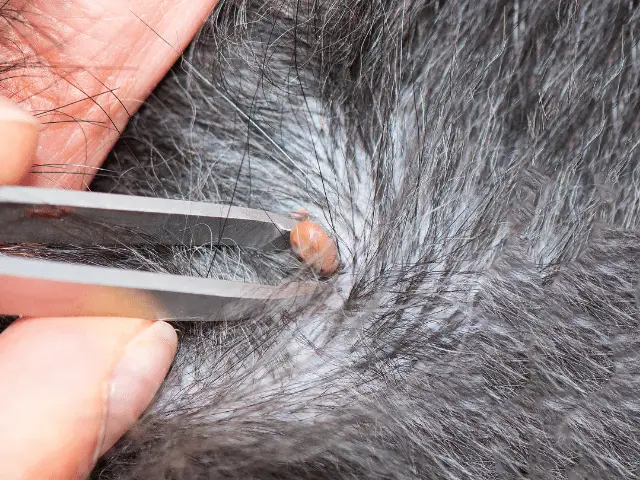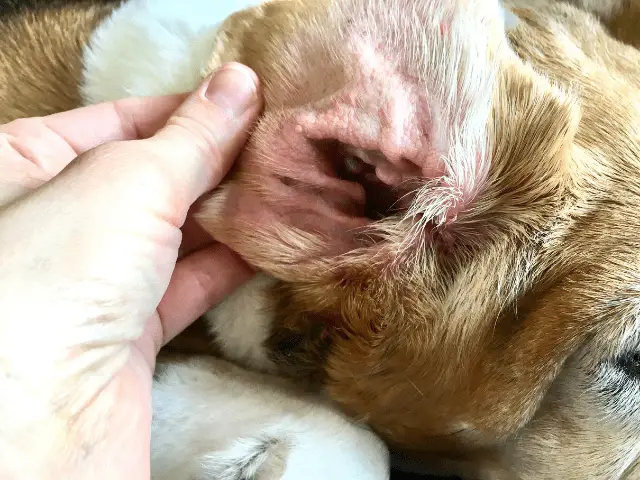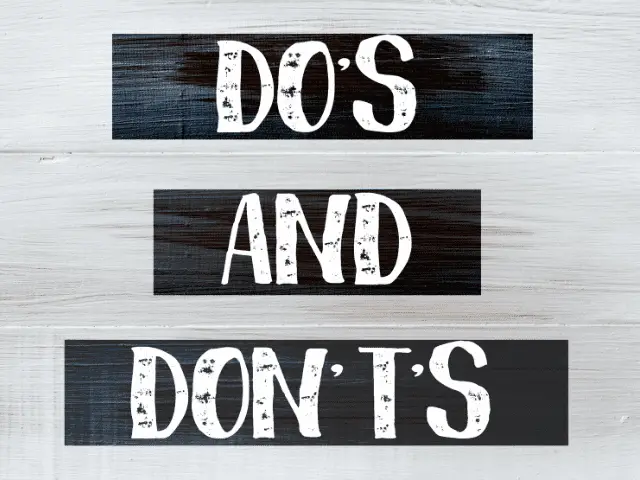As a dog owner, there are few things worse than seeing one of those little critters attached to your pup’s skin—especially if your pooch is in the middle of trying to enjoy the great outdoors with you!
However, you don’t have to worry about finding yourself in this situation as long as you have these simple instructions on how to remove a tick from your dog at the ready!
Learning how to remove a tick from your dog can help ensure that he or she remains healthy and has fun on your next hiking adventure together! Make sure you remove the entire tick and do not squeeze the body to reduce the likelihood of transmitted diseases.
This article contains affiliate links. If you make a purchase through one I may earn a commission.
Remove the Tick

Plucking or pulling at the tick is probably going to hurt your dog, so instead look for where it’s attached and use sharp tweezers or an actual tick-removal tool to remove it by the head. Remove ticks as soon as possible because they can spread disease if they remain attached too long.
During the removal, you will want to apply enough pressure to hold onto the head of the tick, but not so much pressure that you start squeezing the body of the tick. Squeezing the body of the tick may release the tick’s toxins into your dog!
After you have removed the tick, clean the area with rubbing alcohol or soap and water. This will help remove any bacteria tracked onto your dog’s skin by the tick.
You can also try using a tick removal tool . These come in several shapes, but one common variety is shaped like an L or cross.
. These come in several shapes, but one common variety is shaped like an L or cross.
You pinch one end onto your dog’s skin, while holding onto a handle on top of it, then you pull it straight up or out to remove any embedded ticks.
It is not recommended that you smoke out or freeze a tick and then remove it, these tactics can hurt you or your dog.
Dispose of the Tick Safely
In general, don’t touch ticks directly with your hands—wear gloves so that you can get them off without coming into contact with their mouthparts (which may carry diseases). Once you have removed the tick, you need to make sure it can not return to you or your dog.
You can put the tick into rubbing alcohol, a sealed bag or container, or wrap it in tape before throwing it away. If you have access to a bathroom, you can also flush the tick down the toilet.
If after removing a tick you notice any bites on your dog (this could mean he was bitten by another tick while outdoors), consult with your vet immediately especially if the bite is red or swollen. Tick-borne diseases should be treated as soon as possible to limit the negative effects.
Examine Other Areas on Your Dog

In addition to removing ticks, check your dog thoroughly for other signs of insect activity. Ticks can spread disease, so keep an eye out for signs of swelling or lethargy that might indicate a tick-borne illness.
Once you’ve removed all ticks, wipe your dog down thoroughly with antibacterial soap and water. Make sure not to forget inside ears, in and around the groin area, under the tail, and anywhere else that ticks could hide.
You may want to consider washing your dog with tick shampoo to remove any smaller ticks that you may have missed. Your veterinarian can help you choose one that works with your standard tick defense regimen.
to remove any smaller ticks that you may have missed. Your veterinarian can help you choose one that works with your standard tick defense regimen.
Examine Yourself
If you’re like me, you likely have an underlying fear of ticks and have been unconsciously scratching your head, neck, and shoulders while reading this article. If there are ticks on your dog, it’s likely that you have come in contact with the same areas where your dog picked up the ticks while on your hike.
Check your head, ears, toes, back, and underarms for ticks. Taking a good long shower can help you search for ticks in your hair or beard.
Even if you were wearing long pants and walking in grass that wasn’t overly tall, you still may have come in contact with ticks. If you find one on your body, grab some tweezers and carefully remove it right away.
The Dos and Don’ts of Tick Removal

Removing ticks from your dog is not something that should be undertaken lightly. Ticks carry diseases and it’s in your and your pet’s best interest to remove them immediately. Here are some dos and don’ts for getting rid of ticks once and for all.
Tick Removal Dos
- Wear gloves while removing ticks
- Use tweezers to grab the tick
- Pull straight up or out when removing the tick
- Use a proper disposal method like placing the tick in rubbing alcohol or flushing down the toilet
- Clean the bite site after removal
Tick Removal Don’ts
- Use your bare hands to remove the tick
- Twist the tick as you’re pulling it
- Squeeze the body of the tick
- Toss the tick back onto the ground
If you follow these dos and don’ts, you’ll avoid both unnecessary pain for your dog and infecting them with any harmful illnesses. Plus, using an approved tick removal method means there’s less chance of getting a bite.
Some dogs are allergic to ticks and having one attached can cause major skin irritation, itching, and even secondary infections. So once you’ve successfully removed a tick, it’s best to keep your pup away from further contact with these pests. The best way is simply through prevention.
Tick Awareness and Prevention
As you prepare to spend time outdoors with your dog, consider which ticks are most common in your area. If any of them carry diseases that can affect humans, such as Lyme disease or Rocky Mountain spotted fever, it’s important to learn how to remove ticks from your dog.
Prevention is key when it comes to ticks. There are many different types of tick prevention including shampoos, sprays, collars, and oral medications.
Some tick preventatives can be used together. Talk with your veterinarian to create a tick defense plan that will work for your dog. Your veterinarian will be able to look at all of your dog’s medications and heal concerns to come up with the best recommendation.
Final Thoughts
You are now prepared with the knowledge of how to remove and dispose of ticks properly! Use this knowledge to help keep you and your dog safe on the trails.
You can learn more about checking your dog for ticks before, during, and after a hike as well as learn more about tick preventatives for your dog.
